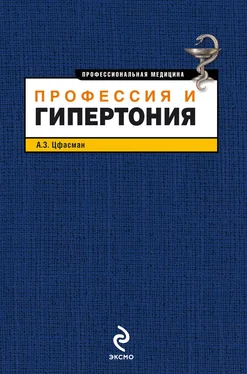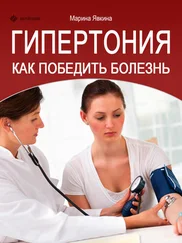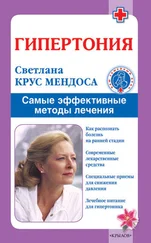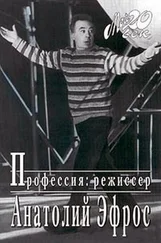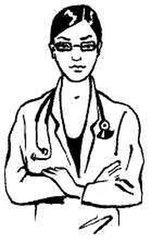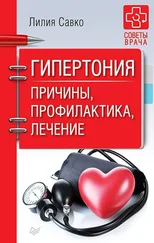Routledge F., McFetridge-Durdle J. Nondipping blood pressure patterns among individuals with essential hypertension: a review of the literature. // Eur J Cardiovasc Nurs. – 2007. – vol. 6(1). – pp. 9-26.
Riiger М., Gordijn М., Beersma D. et al. Weak relationships between suppression of melatonin and suppression of sleepiness/fatigue in response to light exposure. //J Sleep Res. – 2005. – vol. 14. – pp. 221–227.
Sandberg S., Kohvakka A., Cor din A. Rapid reversal of circadian blood pressure rhythm in shift workers. // J Hypertens. – 1988. – vol. 6(5). – pp. 425–429.
ScheerFA., Van Montfrans, Van Someren E.J. et al. Daily nighttime melatonin reduces blood pressure in male patients with essential hypertension. // Hypertens. – 2004. – vol. 43. – pp. 192–197.
Schnall P.L., Schwartz J.E., Landsbergis P.A. et al. Relation between job strain, alcohol, and ambulatory blood pressure // Hypertens. – 1992. – vol. 19(5). – pp. 488–494.
Schwartz G.L. Lead, blood pressure, and cardiovascular disease in men. // Arch Environ Health. – 1995. – vol. 50. – pp. 31–37.
Sekaran S., Lupi D., Jones S.L. et al. Melanopsin-dependent photoreception provides earliest light detection in the mammalian retina. // Curr Biol. – 2005. – vol. 15.-pp. 1099–1107.
Sharifian A., Farahani S., Pasalar P. et al. Shift work as an oxidative stressor. // J Circadian Rhythms. – 2005. – vol. 3. – p. 15.
Sherry P. Managing Fatigue in the Railroad Industry. // National Center for Intermodal Transportation University of Denver. – 2007.
Sicard B.A., Trocherie S., Moreau J., et al. Evaluation of zolpidem on alertness and psychomotor abilities among aviation ground personnel and pilots // Aviation, Space and Environmental Medicine. – 1993. – pp. 371–375.
Sjolin-Israelsson В.A., Enstrom I.E. The impact of work on the night blood pressure dipping profile. // Blood Press. – 2007. – vol. 16(1). – pp. 45–49.
Spenser C., Lip D. Hypertension. Epidemiology and risks. // Pharm J. – 1996. – vol. 263(7059). – pp. 280–283.
Staessen J.A., Bulpitt C.J., O\'Brien E. et al. The diurnal blood pressure profile. A population study. // Am J Hypertens. – 1992. – vol. 5(6 pt 1). – pp. 386-92.
Staessen J.A., O’Brien E.T. Development of diagnostic thresholds for automated measurements of blood pressures in adults. // Blood Pressure Monitoring. – 1999. – vol. 4. – pp. 127–136.
Staessen J.A., ThijsL., Fagard R. et al. Predicting cardiovascular risk using conventional vs ambulatory blood pressure in older patients with systolic hypertension. Systolic Hypertension in Europe Trial Investigators. // TAMA. – 1999. – vol. 282(6) – pp. 539–546.
Stamier J., Caggiula A.W., Grandits G.A. Chapter 12. Relation of body mass and alcohol, nutrient, fiber, and caffeine intakes to blood pressure in the special intervention and usual care groups in: Multiple Risk Factor Intervention Trial. // Am J Clin Nutr. – 1997. – vol. 65. – pp. 338S-365S.
Steptoe A., Roy M.P., Evans O. Psychosocial influence on ambulatory blood pressure over working and non-working days. //J Psychophys. – 1996. – vol. 10. – pp. 218–227.
Steptoe A., Cropley M.,Joekes K. Job strain, blood pressure and response to uncontrollable stress. //J Hypertens. – 1999. – vol. 17. – pp. 193–200.
Steptoe A., Willemsen G. The influence of low job control on ambulatory blood pressure and perceived stress over the working day in men and women from the Whitehall
II cohort //J Hypertens. – 2004. – vol. 22(5). – pp. 915–920.
Sternberg H., Rosenthal Т., Shamiss A. et al. Altered circadian rhythm of blood pressure in shift workers. //J Hum Hypertens. – 1995. – vol. 9(5). – P. 349–353.
Stolarz К., Staessen J.A., O’Brien E.T. //Night-time blood pressure: dipping into the future? //J Hypertens. – 2002. – vol. 20(11). – pp. 2131–2133.
Stork J., Schrader J., Labrot B. et al. Arbeitsassoziierter Blutdruckanstieg und Hypertoniepravalenz – eine Querschnittuntersuchung // Zbl Arbeitsmed 42. – 1992. – vol. 11. – pp. 468–472.
Streddo C., Fuchs S.C., Merlo A.R. et al. Shift work is not associated with high blood pressure or prevalence of hypertension. // PLoS One. – 2010. – vol. 5(12). – p. el5250.
Su T.E., Lin L.Y., Baker D. et al. Elevated blood pressure, decreased heart rate variability and incomplete blood pressure recovery after a 12-hour night shift work. //J Occup Health. – 2008. – vol. 50(5). – pp. 380–386.
Suwazono Y., Dochi М., Sakata K. et al. Shift work is a risk factor for increased blood pressure in Japanese men. // Hypertens. – 2008. – vol. 52. – p. 581.
Takeda N., Maemura K. Circadian clock and cardiovascular disease. // Journal of Cardiology. – 2011. – vol. 57. – pp. 249–256.
Tuck M.L., Stern N., Sowers J.R. Enhanced 24-hour norepinephrine and rennin secretion in young patients with essential hypertension: relation with the circadian pattern of arterial blood pressure. // Am J Cardiol. – 1985. – vol. 1. – pp. 112–115.
U.S. Environmental Protection Agency. Air quality criteria for lead: supplement to the 1986 addendum. Research Triangle Park, NC: U.S. Environmental Protection Agency, Office of Health and Environmental Assessment, Environmental Criteria and Assessment Office. EPA 600/8—89—049E. – 1990.
Van Dongen H.P., Maislin G., Kerkhof G.A. Repeated assessment of the endogenous 24-hour profile of blood pressure under constant routine. // Chronobiol Int. —
2001. – vol. 18(1). – pp. 85–98.
Van Egeren L.F. The relationship between job strain and blood pressure at work, at home, and during sleep. // Psychosom Med. – 1992. – vol. 54. – pp. 337–343.
Vaughan G.M., Becker R.A., Allen J.P. Elevated blood pressure after pinealectomy in the rat // Endocrinol Invest. – 1979. – vol. 2 – pp. 221–224.
Verstraete A.G. Which medicinal drugs impair driving performance? An overview of the European experience, in H. Laurell and F. Schlyter (Els.); Alcohol; Drugs and Traffic Safety. – Stockholm. – 2002. – vol. 4 – pp. 1222–1227.
Villani A., Parati G., Groppelli A. et al. Noninvasive automatic blood pressure monitoring does not attenuate nighttime hypotension. Evidence from 24-h intra-arterial blood pressure monitoring. // Am J Hypertens. – 1992.
Viswanathan A.N., Schemhammer E.S. Circulating melatonin and the risk of breast and endometrial cancer in women. // Cancer Lett. – 2009. – vol. 281(1). – pp. 1–7.
Weber G. High Blood Pressure. Job Related Stress Increases. Blood Pressure While Sleeping. // About.com Guide. – 2007.
Whelton P.K., Applegate W.B. et al. Efficiency of weight loss and reduced sodium intake in the Trial of Nonpharmacologic Interventions in the Elderly. // Circulation. – 1996. – vol. 94 (suppl 1). – pp. 1-178.
Yamasaki F., Schwartz J.E., Gerber L.M. et al. Impact of shift work and race/ethnicity on the diurnal rhythm of blood pressure and catecholamines. // Hypertens. —
1998. – vol. 32(3). – pp. 417–423.
Zawilska J.B., Skene D.J., Arendt J. Physiology and pharmacology of melatonin in relation to biological rhythms. // Pharmacol Rep. – 2009. – vol. 61. – pp. 383–410.
Zeman М., Dulkova K., Bada V. et al. Plasma melatonin concentrations in hypertensive patients with the dipping and non-dipping blood pressure profile. // Life
Sci. – 2005. – vol. 76. – pp. 1795–1803.
Читать дальше
Конец ознакомительного отрывка
Купить книгу
